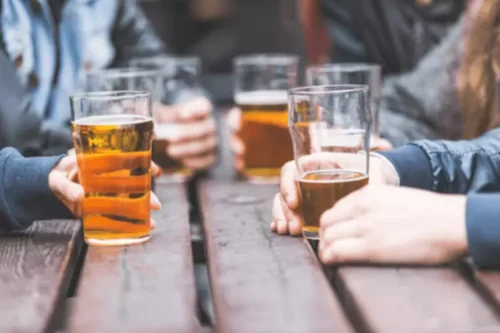Understanding Alcohol Withdrawal Seizures: A Complete Guide

From 1978 through 1984, he was a medical officer in the Ghana Navy and provided a variety of services from general medicine to surgeries. He received his Certificate in General Psychology from the American Board of Psychology and Neurology in 2002. The “tonic” phase of a grand mal seizure involves around 20 seconds of unconsciousness and involuntary muscle spasms.

Can Alcohol Cause You to Have Seizures?

Vitamin C and zinc also contribute to immune system recovery and detoxification. Ways to treat alcohol withdrawal include medical detox, partial hospitalization programs, and intensive outpatient programs, based on symptom severity. A physical exam checks for signs of autonomic instability, including elevated heart rate, high blood pressure, and abnormal reflexes.
Semi-Sober? 5 Signs It’s Time to Go Fully Sober
According to the Epilepsy Foundation, seizures by themselves typically are not fatal. However, they may cause people to fall and sustain potentially serious injuries, such as head injuries. Alcohol seizures may share symptoms with seizures that are not linked to alcohol.

What Happens When You Stop Drinking Cold Turkey?
- Chronic alcohol use suppresses the central nervous system, and when alcohol is removed, the brain becomes hyperactive, leading to symptoms like tremors, anxiety, and, in severe cases, seizures.
- Binge drinking and subsequent alcohol withdrawal can lead to status epilepticus, a severe, life-threatening condition that can be fatal.
- These seizures, also called generalized or grand mal, involve the whole brain and the body’s central nervous system.
- From there, you may continue in residential or outpatient addiction treatment, depending on your needs.
- Patients with ILS have an increased risk of developing SAWS, as well as patients with emergency admission and previous DT among other markers.
Drinking excess alcohol and repeated alcohol consumption for a prolonged time can harm the brain and nervous system. This is especially true for the GABA neurotransmitters that control brain and spinal cord communication. Thiamine supplementation is critical in preventing Wernicke’s encephalopathy, a severe brain disorder caused by vitamin B1 deficiency. Magnesium and folate supplementation supports nerve function and helps reduce withdrawal-related fatigue and confusion.
Why it Is Important to go to Medical Detox for Alcohol Withdrawal?
This guide will walk you through the different Sober living house phases and what to expect at each stage. In medical terms, when someone stops drinking alcohol, doctors call it alcohol withdrawal syndrome (AWS). AWS is different from a regular hangover and can last from a few days to weeks.
Learn the Stages, Symptoms, and Timeline of Alcohol Withdrawal—Plus How to Safely Manage the Process.
Patients with a discharge against medical advice (AMA) or for disciplinary reasons were included, provided consent was not revoked and data collection was complete. Brooke Palladino is a board certified Psychiatric Mental Health Nurse Practitioner (PMHNP-BC). She is a graduate of Plymouth State University with her Bachelors of Science in Nursing and her Masters of Science in Nursing from Rivier University.
Someone with a mild-to-moderate alcohol use disorder may have a problem with alcohol without developing significant dependence. In such cases, alcohol withdrawal may not occur when they cut back or quit drinking. However, about half of people with alcohol use disorders will experience withdrawal symptoms. Yes, alcohol withdrawal is prevented through medical interventions and gradual alcohol reduction strategies. The most effective approach is medically supervised detoxification, which involves tapering alcohol intake or using medications such as benzodiazepines to manage withdrawal symptoms safely.

The tonic phase is followed by the clonic phase in which the arms and legs jerk rhythmically and rapidly. This typically involves bending and straightening of the major joints (elbows, hips, and knees). The person’s face may turn bluish if they have trouble breathing during a prolonged seizure. A tonic-clonic seizure has a tonic (stiffening) and clonic (rhythmic jerking) phase. This may be accompanied by a groan or cry as air is forced through the vocal cords.
Long-term Effects of Alcohol Abuse on the Brain and Nervous System

This means their brain and nerves get extra sensitive to changes in chemicals. When alcohol has already damaged your brain, it is more likely to sustain further damage. Additionally, individuals with previous withdrawal episodes are more likely to experience severe symptoms due to the kindling effect, which makes subsequent withdrawals progressively worse.
Progression of Withdrawal Symptoms
- If you or a loved one is struggling with an alcohol use disorder (unhealthy patterns of alcohol consumption), get in touch with Discover Recovery Treatment Center today.
- Having a clear plan ensures you’re prepared to handle challenges and maintain long-term sobriety.
- These visits also facilitate a comprehensive review of the patient’s lifestyle, dietary habits, and stress levels, all of which can influence seizure risk.
- The IC external cortex is believed to amplify and propagate neuronal activity originating in the IC central nucleus.
More serious symptoms include confusion, hallucinations, seizures, and delirium. To prevent future complications, such as alcohol seizures or other health issues, staying completely alcohol-free is crucial. Friends, family, and alcohol withdrawal seizure recovery groups like Alcoholics Anonymous can provide a great deal of encouragement and accountability, helping you stay focused on your goals. Studies show that individuals who get professional help have higher success rates in managing withdrawal and achieving long-term recovery (4). By managing the risks of alcohol withdrawal, medical care ensures you have the safest and most supportive environment to begin your recovery journey.




